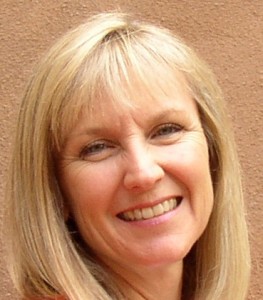Scale Up New Mexico, in collaboration with the New Mexico Angels, is offering a FREE business support program to existing and aspiring business owners in New Mexico called Venture Funding Sprint. This 6-week business support program will equip participants with the understanding of terminology and financial instruments, engaging in negotiations with potential investors, and creating the necessary tools and materials to attract investment.
Continue readingTag Archives: venture capital
See First-Hand What VCs Look For
CNM Ingenuity is hosting its popular Ski Lift Pitch at Taos Ski Valley on Thursday, February 23, 2023. Startups have already been selected to pitch, but entrepreneurs can learn what venture capitalists look for in a fundable start-up by attending the event. Fund managers representing more than $300 million in investable capital from funds around the country are expected to attend.
Continue readingTelling a Story that Drives Investment
When presenting an opportunity to investors, entrepreneurs usually begin by describing their invention and explaining why people need it. Next they present the financial team’s projections about what customers would probably pay for the product or service and what the entrepreneurs want to charge. They end by introducing the entrepreneurial team and detailing members’ credentials.
This approach is the inverse of what venture capitalists like me care about and consider when evaluating an investment. I want to hear about a venture the way I want to read a book or watch a movie: I want a story. Who are the protagonists and the other main characters? What goals do the characters hope to achieve, and how valuable would the goal be if it’s reached? What challenges do the characters anticipate and how will they respond to them? Finally I want to know my role so I can decide if I want the part.
Venture Capitalists Put Market Before Product
When searching for investors, many entrepreneurs and inventors first present their product or technological innovation and then vaguely present the target market as “people who need this product.” But this isn’t how customers think when deciding whether to spend money.
Consumers start with a problem or “pain point” they desperately want to go away. They watch for anything that proposes to solve this problem. Discovering it, they decide whether it’s affordable or whether another product offers a better or cheaper solution. They might even decide they’re willing to live with the inconvenience if the solution is too costly.
Entrepreneur Alert: It’s Time to Prepare for Technology Summit

Betsy Gillette, Director of Market Research & Planning, TVC
Technology Ventures Corporation exists to help innovators find investors for technology-based products they hope to bring to market. In January, 2012, the Albuquerque-based company will select up to 20 entrepreneurs with the most commercially marketable ideas and help them prepare business plans to pitch in April to funders at TVC’s Deal Stream Summit, formerly called the Equity Capital Symposium.
Most of the scientists and engineers who become clients of TVC are sophisticated about technology but novices when it comes to selecting target markets, appraising market needs and attracting venture capital funding. Entrepreneurs interested in being coached by TVC should prepare now by developing the marketing aspects of their business plans. The more realistic they are about the need for their product, market size, customer base and branding, the more likely they are to draw investors.
Identify Specialty Before Looking for Investors

Holly Bradshaw Eakes, Principal, The Holly Company Business Consultants
The greatest challenge an entrepreneur may face is finding capital to launch a business, especially when the business idea is related to high-cost startup such as that found in the technology sector. For an entrepreneur with realistic plans for rapid business growth and the potential to scale to larger markets, trading partial ownership for capital may be the only option.
Venture capitalists currently fund about one out of every thousand startups. With the odds stacked against obtaining equity capital, an entrepreneur must identify the investors most likely to invest in his business. Determining which source to pursue depends largely on industry focus, business stage and the amount of money needed. A handful of equity investors have offices in New Mexico and actively pursue investments in the state.
Venture Capital: It’s More Than Money

Kim Sanchez Rael, General Partner, Flywheel Ventures (at time of writing)
Jim Collins, author of Built to Last and Good to Great, and an old friend of mine, has written that the critical questions in life are who-decisions, not what-decisions. “The primary question is not what mountains to climb but who should be your climbing partner,” he writes. As professional investors, our evaluation of each potential investment opportunity emphasizes the entrepreneurial team more than market strategy, technology or financial projections. When evaluating the pros and cons of bringing on an investor as a partner in your business, your considerations should be similarly weighted toward who-decisions. Professional investors should provide assistance and value in many areas beyond financial resources. Here are some key areas to consider when selecting an investment partner:
Entrepreneurs Beware the Valley of Death

Richard T. Meyer, SCORE
Business owners know it takes money to make money; production expenses must be paid before products are sold and revenue is received. Entrepreneurs with a business idea have an even greater need for up-front cash. They must have enough capital to cover negative cash flow in the early months or years of new business creation and growth. Without adequate initial investment, they risk falling into the so-called valley of death – the deep and wide gulf that separates a company’s need for capital and investors’ willingness to supply it.
Also known as the grand canyon of capital need vs. availability, the valley can be shallow or deep depending on the amount of money needed to develop the idea or product. Continue reading
Consider Strategy Before Seeking Equity

Tom Stephenson, Managing General Partner, Verge Fund
Once an entrepreneur decides that equity capital is the best way to finance his business, the next questions are how much and when should it be raised? One approach is to determine from the business plan how much cash shortfall is projected early on and raise that amount. But raising money in multiple rounds is often a better choice, allowing the entrepreneur to retain a greater portion of ownership.
If a business plan calls for $3 million in total financing to achieve profitability in three years, a startup raising that money all at once will give up a large portion of the company — perhaps as much as 75 percent. New companies are high risk; if investors put in less at the beginning, they will be willing to bet more money on a promising venture later, taking fewer subsequent shares of the business in the process. Continue reading
Businesses, Like Life, Have Stages

Paul F. Goblet, Former Financial Advisor, NM SBIC
Few businesses follow a predictable path and timeline from one stage of life to the next. Some linger for a long time as startups, while others dash directly from startup to rapid growth. Knowing the life cycle of a typical business can help an entrepreneur know where to find capital to reach the next stage.
The seed or startup stage starts with an idea or a prototype for a product or service. At this stage, entrepreneurs either tap friends, family members or other personal contacts for funds, or they seek angel investors, SBIR grants, micro loans or very early stage venture capital.
When a company is preparing its product or service for a market launch, it’s in the early stage of life. Continue reading

